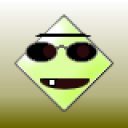1 Answer
This region has had a long and tonoilous times. I will give you a little info on it after WWI to WWII during since that is when you grandpa served there. I would encourage you to continue researching both before and the times after WWII. Annexation to Italy of all the lands they claimed were inhabited by an Italian speaking population. Many local Italians enrolled voluntarily in the Royal Italian Army (a notable example is the writer Scipio Slataper.
After the end of World War I, the Austro-Hungarian Empire dissolved, and many of its border areas, including the Austrian Littoral, were disputed among its successor states. On November 3, 1918, the Armistice of villa Giusti was signed ending hostilities between Italy and Austria-Hungary. Trieste was occupied by the Italian Army (warmly welcomed by the Italian portion of the local population after the Austro-Hungarian troops had been ordered to lay down their arms, a day before the Armistice was due to enter effect, effectively allowing the Italians to claim the region had been taken before the cessation of hostilities (a similar situation occurred in South Tyrol). Trieste was officially annexed to the Kingdom of Italy only with the Treaty of Rapallo in 1920. The region was reorganized under a new administrative unit, known as the Julian March (Venezia Giulia).
The Narodni dom, Slovene Hall of Trieste, burned down by the Fascist squads in 1920.The union to Italy, however, brought a small loss of importance for the city, with the new state border depriving it of its former hinterland. The Slovene ethnic group (around 25% of the population according to the 1910 census[9]) suffered persecution by rising Italian Fascism. The period of violent persecution of Slovenes began with the riots of April 13, 1920, which were organized as a retaliation for the assault on Italian occupying troops in Split by the local Croatian population. Many Slovene-owned shops and buildings were destroyed during the riots, which culminated when a group of Italian Fascists, led by Francesco Giunta, burned down the Narodni dom ("National House"), the community hall of Trieste's Slovenes.
After the emergence of the Fascist regime in 1922, an official policy of Italianization began. Public use of the Slovene language was prohibited, by 1927 all Slovene associations were dissolved, while names and surnames of Slavic and German origin were Italianized by the end of 1930. Several thousand Slovenes from Trieste, especially intellectuals, emigrated to the Kingdom of Yugoslavia and to South America, where many became prominent in their field. Among the notable Slovene ?migr?s from Trieste were the writers Vladimir Bartol and Josip Ribi?i?, the legal theorist Boris Furlan, and the architect Viktor Sul?i?. Meanwhile several thousands ethnic Italians from Dalmatia moved to Trieste from the newly created Yugoslavia.
In the late 1920s, Yugoslav irredentism started to appear, and the Slovene militant anti-fascist organization TIGR carried out several bomb attacks in the city centre. In 1930 and 1941, two trials against Slovene activists were held in Trieste by the fascist Special Tribunal for the Security of the State.
Despite the demise of its traditional multicultural and pluri-linguistic character, and the emigration of many Slovene and most of the German speakers, the overall population continued to grow. Even the economy enjoyed a significant improvement in the late 1930s, with development of industrial activities.
The Fascist Regime built several new infrastructures and public buildings, including the almost 70 m (229.66 ft) high Victory Lighthouse (Faro della Vittoria), which became one of the city's landmarks. The University of Trieste was also established in this period.
Several artistic and intellectual subcultures continued to swarm even under the repressive Fascist regime. In the 1920s, the city was home to an important avant-gardist movement in visual arts, centered around the futurist Tullio Crali and the constructivist Avgust ?ernigoj. In the same period, Trieste consolidated its role as one of the centres of modern Italian literature, with authors such as Umberto Saba, Biagio Marin, Giani Stuparich, and Salvatore Satta. Among the non-Italian authors and intellectuals that remained in Trieste, the most notable were the Austrian Julius Kugy and the Slovene Boris Pahor. Intellectuals were frequently associated with Caff? San Marco, a caf? in the city which remains open today.
The promulgation of the anti-Jewish racial laws in 1938 was a severe blow to the city's Jewish community, the third largest in Italy. The Fascist anti-semitic campaign resulted in a series of attacks on Jewish property and individuals, culminating in July 1942, when the Great Synagogue was raided and devastated by the Fascist Squads and the mob.
This are played an import part in 1998 with the genocide and Bosnian War
| 14 years ago. Rating: 0 | |

 concetta
concetta
 Raider_retired 3_29_
Raider_retired 3_29_





Sorry it is long but, there is ton of history on this subject, If it helps some I would appreciate a thumbs up for all my looking back at ould notes! Thanks I got you too!